|
|
|
| Published
on 22
Nov
2009 |
All rights reserved.
|
|
|
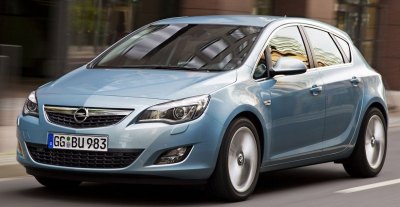
|
New Astra is exactly what we have
expected...
|
British
journalists like to
say a lot of bad things about the old Vauxhall / Opel Astra when they
introduce the new generation car. They must be eating their own words.
Back in 2004, most were excited with its striking appearance, its much
upgraded packaging and build quality. Even though it failed to match
Ford Focus for handling and Volkswagen Golf for refinement, most
journalists seemed to be satisfied with its overall performance and
chassis dynamics. If the old Astra were really as bad as what
journalists described today, how can it attracted more than half a
million buyers every year ?
I used to have a soft spot on the outgoing Astra. That's why I am not
going to play down the old car in order to praise how much progress the
new generation has made. In my opinion, substantial progress is the
natural result of the industry's development. Your R&D tools,
manufacturing equipments and your component suppliers are advancing
every year, so the summation of 5 or 6 years of progress should
translate to much higher expectation. The new generation Astra is
exactly what I have expected, nothing less and nothing more.
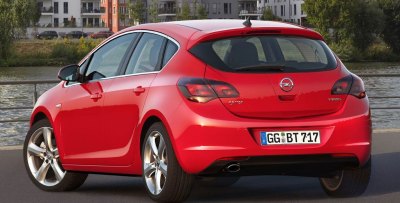
|
It easily looks more than a generation
advancer than Golf VI and Focus...
|
It still looks attractive. Maybe not
as striking as the old car, but more elegant and classy. Like the
bigger Insignia, Mark Adams' design team chose a softer, sleeker
interpretation than the last generation's angular design language. A
fast windscreen, swoopy roofline, kickback C-pillar and sharp crisp
line on the rear fenders deliver the right sporty flavour. It looks
quite like a new Mazda 3, but without the latter's overdone makeup. I
like its appearance very much. It easily looks more than a generation
advancer than Golf VI and Focus.
Nevertheless, this design has some drawbacks. Firstly, its aerodynamic
drag coefficient of 0.32 is not good enough, especially for a car
looking so sleek. Secondly, its hatchback door is small, and its faster
angle eats into luggage space, wasting its extra dimensions. Thirdly,
its thick C-pillars create serious blindspots at rear quarter view.
Similarly, the small front quarter windows also hamper view over cars
at T-junctions. Opel design team sacrificed some functions for form.
At a first glance, you must fall in love with its interior. Quality
plastics and tight assembly aside, it looks tasteful. The stylish
center console is a refresh to your eyes, as are the red-glowing dials.
The whole environment feels like a mini-Insignia. Space is plenty both
front and rear, although I had expected even more rear legroom from its
class-leading 2685 mm wheelbase.
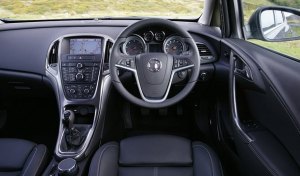
|
The whole environment feels like a
mini-Insignia...
|
Yes, the new generation Astra has
grown a lot in all
dimensions. It is 170 mm longer, 160 mm wider and 50 mm taller. Its
wheelbase has grown by some 70 mm, taking its advantage over Volkswagen
Golf to more than 100 mm ! Why does Rüsselsheim make it so large ?
I suppose it is the outcome of integrating General Motor's C-segment
car programs. The new Astra is built on GM's Delta II platform. Unlike
the previous Delta I, which was primarily designed by and for Opel /
Vauxhall for sale in Europe, and then converted to Chevrolet Cobalt for
sale in North America, the Delta II platform was engineered for global
sales from the outset. This mean it has to satisfy the need for
Chevrolet Cruze (Daewoo Lacetti). You know, America's so-called
"compact cars" are always larger than European norm, so Astra has to
compromise.
A bigger car inevitably weighs more. Opel said the new Astra carries an
average 40 kg more than the equivalent old car, but from its modest
acceleration I suspect the actual figure could be close to 100 kg.
Unfortunately, the company refuses to offer the exact kerb weight
figures these days (it only revealed the weight of the base model to
represent the whole range), so we cannot prove that. On the positive
side, the extra weight is well spent to increase torsional rigidity of
its chassis by a massive 43 percent, and reduce NVH level significantly
by upgrading insulation. Just as you would expect, on the road the new
Astra is much more refined than the old car. Its wind and road noise
level is among the lowest in the C-segment.
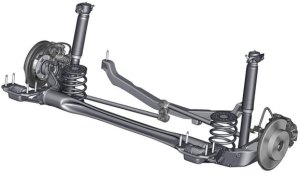
|
An additional pair of Watts link frees
up vertical elasticity...
|
More brilliantly, it also rides
exceptionally well on poorly
surfaced British roads. Like before, its suspension system consist of
MacPherson struts up front and a torsion beam at the rear. CDC
continuous adaptive damping is an affordable option again. So how does
it achieve to smoothen its ride ? The answer is an additional pair of
Watts link at the rear suspension. They are two rods tying to a ball
joint bolted on a steel rear frame. Because of their presence, lateral
movement is controlled, thus the Astra can use softer suspension
bushings to absorb vertical shocks. The construction is simple and cost
effective. Moreover, unlike a multi-link suspension, it does not
protrude into the cabin or boot, so it retains the space-saving
advantage of torsion-beam suspension. I wonder why other car makers
didn't think of that.
That said, the new suspension arrangement cannot better Volkswagen Golf
for ultimate ride refinement. It does, however, offer extra suppleness
and quietness over the sportier setting of Focus and Mazda 3. This make
it a better choice than the latter two for most ordinary drivers.
Nevertheless, in the handling department, the new Astra fails to match
most rivals in the multi-link camp. Although it displays excellent grip
and braking, its decent body control and agility is mostly down to the
monitoring of ESP. Keen drivers would demand sharper turn-in and less
initial understeer. Its electric power steering once again robs it of
real communication, preventing its driver from feeling engaging.
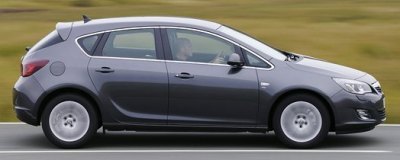 |
The Astra feels slower than its power
rating or its claimed 0-60 mph figures suggested. Blame to its weight...
|
The Astra offers a wide range of
engines for selection. Considering its hefty weight, you can forget the
gutless 1.4 (100hp) and 1.6 (115hp) naturally aspirated units. They
were okay on the old car, but coping with the new car's extra weight
they are hopelessly slow. You had better to go for their turbocharged
versions. 1.4 Turbo offers a more useful 140 hp and 147 lb-ft of torque
to do a decent job. It is also reasonably refined and frugal, just
don't compare it with Volkswagen's more advanced 1.4 TSI engine. 1.6
Turbo offers a respectable 180 horsepower, but it introduces some
torque steer and wheel spin if you are harsh on throttle. No matter
equipped with which engine, the Astra always feels slower than its
power rating or its claimed 0-60 mph figures suggested. Blame to its
extra metal again.
Undoubtedly, the new Astra has strong showroom appeal. It looks
handsome and well built. It has a quality interior and competitive
space. Its ride comfort and running refinement is exceptional. However,
in dynamic terms it still fails to impress like Focus, Golf or Mazda 3.
You can't say this strategy wrong, as most drivers in the world are not
that demanding on driving fun. Although it doesn't set car enthusiasts
like us on fire, I do believe it will continue to be a sales success. |
Verdict:     |
| Published
on 5
Nov
2011 |
All rights reserved.
|
|
Buick Verano / Excelle GT
|
|
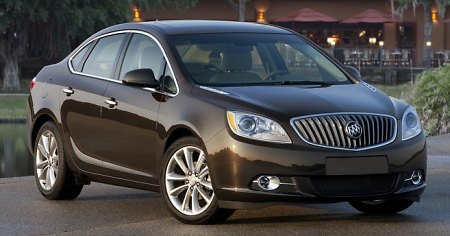 |
Earlier this year I saw the
new Buick Excelle GT on streets of China cities. It looked very nice –
stylish, elegant, graceful yet compact. For a car enthusiast, it is
easy to see its relationship with Opel Astra – it is basically a booted
(saloon) version of the German hatchback. A few months later, the same
car appeared on the roads of North America, this time wearing the badge
"Verano". These remind us a couple of facts: 1) Buick is increasingly
dependent on Opel engineering. Now 2 of its 3-cars lineup are rebadged
Opels; 2) China is now more important than its home market, so its new
cars are usually launched there first. Chinese motorists get the first
taste of the cake.
Despite that, the Excelle GT and Verano have a key difference: engine.
While the former carries over the powertrain of Opel Astra, i.e. 140hp
1.8 Ecotec DVVT and 180hp 1.6 Ecotec turbo, the American version makes
do with a naturally aspirated 2.4-liter Ecotec. Why? Because the later
is assembled in the North America, like Verano itself, while the
aforementioned Opel engines are not. It goes without saying that local
sourcing guarantees lower costs.
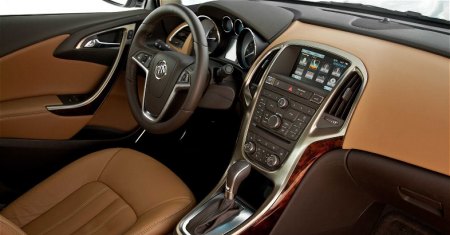 |
The 2.4-liter engine comes with pretty sophisticated
technologies, such as direct fuel injection and dual-VVT, but its
output of 180 hp is not particularly impressive, especially compare
with the 200 hp level of Acura TSX 2.4 and Hyundai Sonata 2.4. GM will
replace it with a new 190hp 2.5-liter (first seen on Chevrolet Malibu)
from the second model year, but for the time being buyers have to put
up with modest performance and flexibility. 0-60 mph acceleration takes
about 8.5 seconds. A 1.5-ton kerb weight is another reason to blame.
Part of weight is contributed by the extensive NVH engineering applied
to the car. Unusual for its class, it has laminated windscreen and side
glass, triple-door seals, acoustic headliners, underbody sealing and
lots of sound deadening materials to insulate various noise sources
from the cabin. Taking into account the rigid chassis and fine
suspension tuning of Astra, no wonder the car is remarkably quiet on
road, whether accelerating or cruising. From this viewpoint, you may
say it is a true Buick.
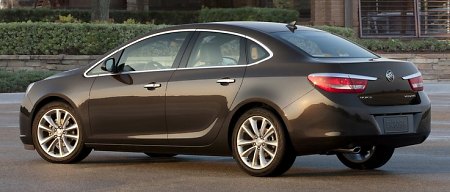 |
On the other hand, most of the fine body control and ride
suppleness of
Opel is preserved. The handling and ride feels more Germanic than
American. However, it is by no means athletic, let alone call it
entertaining. The weight, the quietness and smoothness rob it with
response and feedback that associate with lighter, nimbler cars.
Overall, the conversion from Opel to Buick is well judged considering
its target audiences. It is not an outstanding work, but good enough to
get new, younger customers to Buick.
|
Verdict:    |
| Published
on 6
Dec
2011 |
All rights reserved.
|
|
Astra GTC
|
|
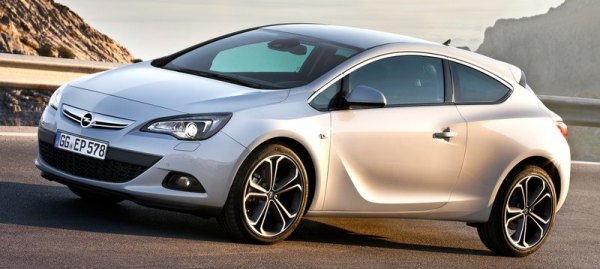 |
It looks great, doesn't it?
I doubt any other C-segment cars could be as beautiful as Opel Astra
GTC. Theoretically, the GTC is only a 3-door hatchback, but it looks
much more attractive than traditional coupes with a proper tail, such
as BMW 1-series coupe, Honda Civic coupe or Scion tC. That bring us to
a fundamental question: what makes a "coupe" look like a coupe?
Traditionally, a coupe has to look fast and light. A sleek body shape
with fast angle bonnet, windscreen and rear window contribute to the
sense of speed, while a small glasshouse and a small tail add lightness
to the visual effect. Unfortunately, this formula works best on cars at
least as large as a Mercedes CLK (C-class Coupe). Anything smaller
would seriously compromise the visual effect, because the need to offer
adequate cabin space always contradicts to the aforementioned
proportion. This explain why we have yet to see a really beautiful
C-segment coupe until now.
In recent years, European designers figured out how to overcome the
constraints. They came up with the idea of "hatchback coupe". Some said
the first generation, Giugiaro-designed VW Scirocco (1974) was the
pioneer, but I would give credit to the original Opel Astra GTC (2005)
penned by Martin Smith. While the old Scirocco (as well as its Mk2 and
Corrado) did have a hatchback tailgate instead of a proper trunk, it
compromised rear passenger headroom for its fastback shape, therefore
it had little relevance to the trend started by the GTC. In fact, the
current generation Scirocco and Renault Megane coupe follow exactly the
path set by Opel.
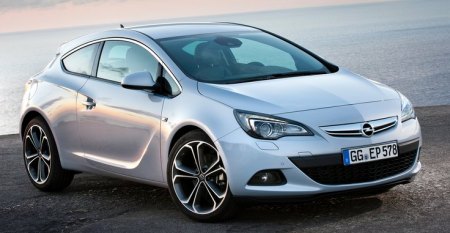 |
So what makes the GTC so much better looking than the
regular Astra?
The answer is all-new sheet metal. It has a lower and wider stance
(30mm lower and 26mm wider), much faster windscreen, slim side glasses,
broad shoulders and many aggressive crease lines to enhance the sense
of sportiness. A fast-rising waist line leads to a small rear window
and tiny tailgate to generate a faux perception of slimness at the
tail, even though the rear roof line is actually as high as
conventional family hatchbacks. The resultant extra-large rear bumper
is cleverly decorated with pseudo diffusers to hide its bulk. In
essence, the styling techniques Opel employed are no different to
Renault Megane coupe, but the execution by its design chief Mark Adams
is better, with smarter details and a better judged proportion.
The wheels are also essential to its looks. The GTC offers alloy wheels
ranging from 17-inch to Ferrari-size 20-inch. The latter is a must to
deliver the best visual effect, of course, although it brings
compromises in ride quality. With the largest wheels fitted, the car
looks smaller and more energetic than it actually is.
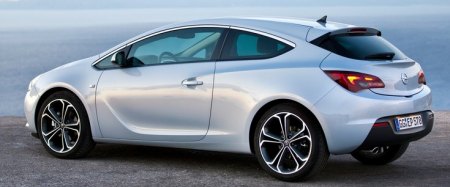 |
Compare with its 5-door sibling, the GTC has wider tracks –
up 40 mm
and 30 mm front and rear respectively – 15 mm lower ride height and
stiffer springs, dampers and bushings to enhance cornering prowess.
However, the most important change is the front suspensions, where the
regular MacPherson struts have been replaced with more sophisticated
HiPerStruts from Insignia OPC. They have the King-pin offset (i.e.
distance between the steering axis projected to the ground and the
contact patch center of tires) shortened by a third, thus relieve
torque steer. The new suspension geometry also explains why the
wheelbase has been lengthened by 10 mm to 2695 mm. At the rear, the GTC
keeps the Astra's torsion beam and Watts link arrangement, which has
been proved barely inferior to all-independent multi-link setup. As in
the 5-door, Flexride electronic adaptive damping system is offered at a
reasonable price. It provides three modes – Touring, Normal and Sport
for the driver to select.
On the road, the car is admirably good to drive. Its rack-mounted
electrical power steering provides decent feedback and the kind of
speed and accuracy you would expect on a performance car. The nose
turns into corner more eagerly. The suspensions and wider tracks give
it excellent body control. The large footprints offer bags of grip.
Most
important, the GTC flows through the twisty fluidly, inspiring
confidence. Meanwhile, the ride is firm but good damping soaks up bumps
on B-roads surprisingly well. Overall, the chassis of GTC is well
engineered to be an all-rounder. There is little to separate it from
Volkswagen Scirocco. Ultimately, it is not capable to challenge a
Renault Megane RS or Scirocco R for sharpness, but that task will be
left to the forthcoming OPC version.
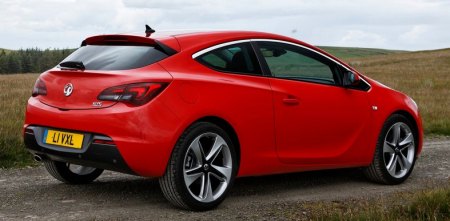 |
In terms of powertrain, Opel is not as competitive as Volkswagen. Its
165hp 2.0-liter turbo diesel is strong but less refined than its
rivals. Its 180hp 1.6-liter turbo petrol, still comes without direct
injection and variable valve timing, lacks flexibility at both ends of
its spectrum. Neither engines could provide the sort of performance
expected, as the GTC is heavier than the class norm. Some might think
the 140hp 1.4 VVT turbo petrol a better option, as it is actually more
flexible than the 1.6 turbo. However, a Volkswagen 1.4 twincharger
produces 30 more horsepower at the same fuel consumption. The GTC also
lacks the Scirocco's twin-clutch transmission, although its 6-speed
manual is slick enough.
Performance chasers have to wait for the 280 hp OPC, but that will be
another story.
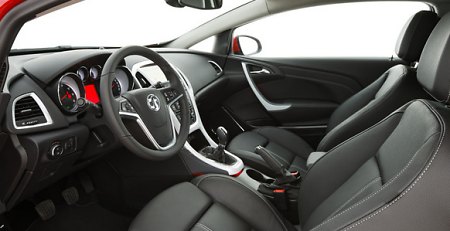 |
Inside, the GTC shares the same dashboard and switchgears with its
5-door sibling. A few faux alloy decors and heavily bolstered front
seats are not good enough to establish an image superior to regular
Astras. Rather, it is the
higher waistline, steeply raked windscreen and shallow windows that
mark it out. Surprisingly, the rear seats offer plenty of space for a
couple of adults, as the roof line is actually pretty high. Legroom for
the rear passengers is also generous for its class. Even more
surprising is the boot volume – at 380 liters, it is actually larger
than the 5-door's ! The passenger and luggage accommodation is a trump
card of the GTC, just next to its exterior design.
At the end, the Astra GTC is not as versatile as Volkswagen Scirocco.
Its powertrains, performance and interior design fall short of the high
standard of its exterior looks. However, it is a much better bet than
Renault Megane Coupe or other C-segment coupes on the market. Given a
stronger engine, it might just rise to the top of the class. One thing
is for sure: a solid foundation has been laid for the forthcoming Astra
OPC.
|
Verdict:     |
| Published
on 18
Jun
2012 |
All rights reserved.
|
|
Astra OPC
|
|
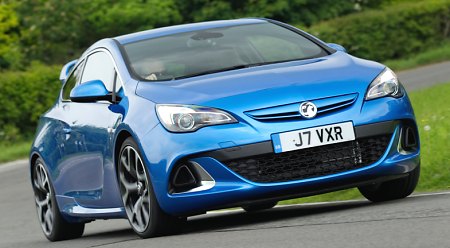 |
Hot hatches don't come any
more stylish than Opel Astra OPC. Based on the already beautiful Astra
GTC, the Opel Performance Center version raises the game with double
rear spoiler, fire-breathing intakes, rectangular exhausts and very
stylish alloy wheels measuring as large as 20 inches – is it a hot
hatch anymore? If Ferrari built a hot hatch, it would probably look
like this one. The OPC makes its rivals suddenly look ordinary.
Volkswagen Scirocco is relatively conservative, while Renault Megane RS
looks
too rough in comparison.
Apart from style, the Astra OPC is also the most powerful in the class.
Its 280 hp and 295 lbft output exceeds that of Megane RS 265 by 15 hp
and 30 lbft respectively. Not quite in the league of the late Ford
Focus RS500 (350
hp and 339 lbft) or the 4-wheel-drive Mitsubishi Lancer Evo X and
Subaru Impreza WRX STi, but as far as a front-wheel drive hot hatch is
concerned, it is unrivalled at the moment. Like its key rivals, its
power comes from a 2.0-liter four-cylinder turbocharged
engine. It is based on the all-alloy, direct-injected unit serving
Insignia, but like
the hotter version found on Buick Regal GS, it gets a new cylinder head
and a larger turbocharger capable of boosting 1.5 bar. That is
significantly higher than the cases of Ford Focus ST (1.1 bar),
Scirocco R (1.2 bar) and
Megane RS 265 (1.3 bar normal, with 1.5 bar on overboost). No wonder it
achieves a class-leading specific output of 140 horsepower per liter.
This also
enables the car to claim the highest performance of the class – 5.6
seconds gets it from rest to 60 mph. Top speed is so high that it needs
an electronic regulator set at 250 km/h or 155 mph. Not many hot
hatches can touch that magic figure.
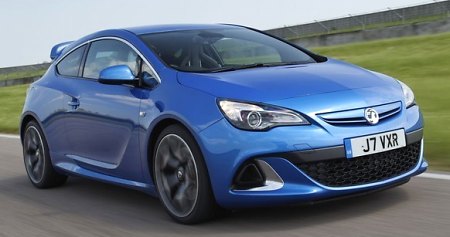 |
The rest of the car also receives the best parts available.
Its front
suspensions are torque-steer-reducing Hiper struts like GTC and
Insignia OPC. The torsion-beam and Watts link rear axle might be
inferior to the independent multi-link setup on its rivals, but the
Opel is compensated with continuous adaptive dampers supplied by ZF
Sachs, or what the company calls "Flexiride" system. It offers 3 modes
– Normal, Sport and OPC (or VXR on Vauxhall version) – to alter damping
stiffness. The last mode also weighs up the steering, sharpens throttle
response and turns the instruments red to thrill you. The suspension
setting is around 30 percent stiffer than the case of regular GTC,
while ride height is dropped by 10 mm.
The standard car's electrical power steering has been replaced by a
hydraulic one in an attempt to improve feel. The OPC also gets a
mechanical LSD to regulate wheel spin in tight corners or on uneven
surfaces, something most of its rivals don't get. The huge alloy wheels
are shod with massive, 245/35ZR20 rubbers. The front wheels house
high-spec Brembo brakes with 355 mm dual-cast discs. With a kerb weight
of 1475 kilograms, the Astra OPC surely needs those powerful brakes.
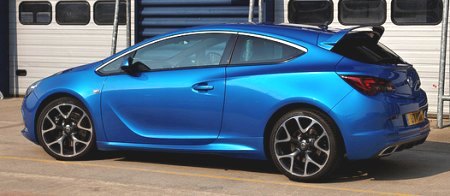 |
The interior is not markedly different from the GTC, save
the sports
bucket seats and flat-bottomed steering wheel. It does not match the
exterior for excitement, but the space offered is undeniably generous.
The rear seats are truly accommodative for adults, as we found on the
GTC earlier. In regular driving, the car is also surprisingly
comfortable. Its cabin is well insulated from road and wind noise – now
you understand why it is so heavy – while the suspension soaks up bumps
well, even though on those low-profile rubbers. All 3 modes of
Flexiride are usable on road. Naturally, the OPC mode is the most
aggressive, but it leaves enough compliance to glide over B-roads
without much pain. At low speed, the OPC drives very much like the GTC,
save a heavier clutch and more turbo lag.
However, you don't buy an OPC because of its comfort and practicality.
What we care most is the performance and handling it offers, and that
is what made it somewhat disappointing. First of all, the engine is not
as good as its figures suggested. Owing to the big turbo, its power
delivery is quite laggy. There is noticeable lag at low rev and it
doesn't come alive until 3000 rpm. Even with the turbine spooled up,
the sense of acceleration is not as violent as the old Astra OPC – that
car won our praise for its explosive power. It does produce a
purposeful, high-pitch air-sucking noise like many high-performance
turbocharged cars, but the power band is narrow, lacking both low-end
and high-end flexibility. You need to work harder through the
long-throw 6-speed manual gearbox to keep the engine boiling. Should
you manage that, you will find a solid performance. However, on twisty
mountain roads you are more likely to lose momentum at each corner.
This makes the OPC less fluent and ultimately less quick to drive than
the
class-leading Megane RS 265 or a DSG-equipped Scirocco R.
The chassis is not as great either. While body control, traction and
grip are all very good, the controls are not perfect. The steering
feels vague, despite of that hydraulic servo. The brake pedal is a
touch too sensitive at the first half inch of its travel. The chassis
tends to understeer at the limit, which is not much of a surprise for a
powerful front-driver, but the problem is its tail does not respond to
throttle modulation. Lift off mid-corner and it won't kick its tail out
like the best hot hatches, therefore it is not as fun to drive as it
should be.
However, worst of all is the presence of torque steer – not as severe
as the old
car, but a lot by modern standards. The Hiper struts simply fail to
tame torque steer because its king pin inclination is reduced by only a
third compare with conventional MacPherson struts. You have to fight
against the steering forces constantly on bumpy B-roads. The operation
of LSD in tight bends further complicates the matter, corrupting
steering feel.
All in all, the Astra OPC is flawed. Its chassis tuning lacks finesse,
while its engine is disappointing. What a pity. Its stylish body, solid
chassis and
spacious interior could form a solid basis for it to build on.
Unfortunately, OPC is too ambitious with the project, setting a
performance target too high and overestimating its own capability.
It is still a charming and practical hot hatch, just not as good to
drive as it looks.
|
Verdict:     |
| Published
on 22
Mar
2013 |
All rights reserved.
|
|
Cascada
|
|
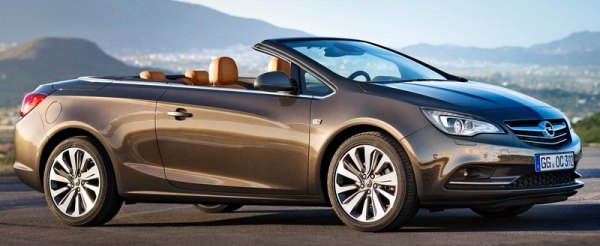
|
The fever for
coupe-cabriolets is cooling down as car makers finally realize that
conventional soft-tops are lighter, more space efficient and cheaper to
build. Opel is one of them. Its new soft-top Cascada replaces the old
Astra TwinTop to be the company's open-top coupe. Its fabric roof can
be opened or closed in 17 seconds, down from the hard top's 26. When
the roof is stored, its luggage volume is 280 liters, versus the
previous 205. Moreover, chassis rigidity is constant regardless of the
position of roof. Compare with the old car, torsional rigidity is up by
43 percent, no wonder it feels stiff and refined on the road.
The Cascada is built on the underpinnings of Astra GTC, sharing the
latter's 2.7-meter long wheelbase. However, in an attempt to position
it higher in the market place, Opel deliberately drops its Astra
moniker. It declares the car larger than an Audi A5 Cabriolet, which is
indeed correct, but I think few people will confuse it with Audi.
Fortunately, it is priced nearer to the level of Golf Cabriolet and A3
Cabriolet, while offering slightly more rear seat legroom and a true
coupe style
that those hatchback-based rivals could not match. It also gets the
torque-steer-reducing HiPer strut suspension and Flexride adaptive
damping from the GTC, so it sounds adequately premium.
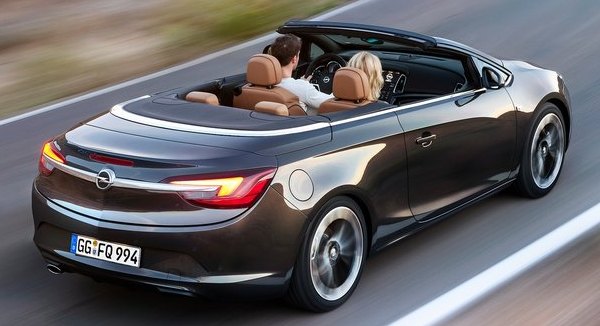
|
Just don't expect it to be an exciting drive. This car is very heavy,
partly due to its structural reinforcement, partly because Opel has yet
to mastermind lightweight engineering. It tips the scale at nearly 1.7
ton,
therefore the base 1.4 Turbo engine with 140 hp is best to be avoided.
A lot better is the new 1.6 SIDI
direct injection turbo with 170 hp (a 200 hp version will come soon),
but still it is more about
refinement than
sparkling performance. Expect 0-60 mph to take more than 9 seconds.
Diesel
engines might be better options. 2.0 CDTi provides 165 hp
and 280 lbft of torque, while the range-topping sequential twin-turbo
2.0 diesel
can pump out 195 hp and 295 lbft. This should cut 0-60 to the
mid-8-seconds range. For transmission, you can choose between 6-speed
manual and 6-speed auto, but the latter is undoubtedly more suited to
the relaxed character of Cascada.
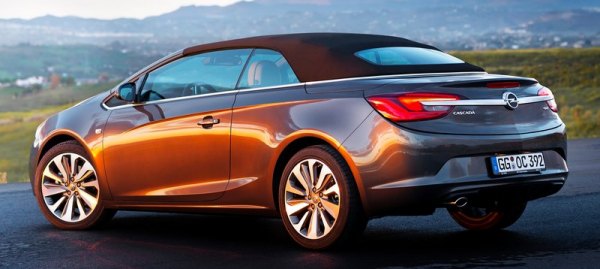
|
Yes, the Cascada is all about comfort. Its soft-setting suspension
returns a supple ride, while NVH suppression from the chassis and roof
is excellent. There is little buffeting with the roof down, and little
noise enters the cabin with the roof up. The 1.6 SIDI engine is smooth
and quiet (not so good for other engines), ditto the automatic
transmission. Handling is competent enough to please ordinary drivers,
with good grip, decent body control and a predictable manner. The
steering is light but uninspiring. You won't get excited with the way
it overtakes or corners, but a relaxing drive on motorway is
guaranteed.
In the C-segment cabriolet class the old-style Golf Cabriolet is still
our favourite, thanks to its superior build quality, packaging
efficiency and performance. The Opel is less rounded, but it is still
appealing to those putting comfort and style on first priority.
|
Verdict:    |
|
|
|
|
|
|
|
|
|
|
Astra 1.4 Turbo
|
2009
|
| Front-engined,
FWD |
| Steel monocoque |
| Mainly steel |
| 4419 / 1814 / 1510 mm |
| 2685 mm |
Inline-4
|
| 1364 cc |
DOHC 16 valves, VVT
|
| Turbo |
| - |
| 140 hp |
| 147 lbft |
| 6-speed manual |
F: strut
R: torsion-beam, Watts link
|
| - |
| 205/60R16 |
1318 kg
|
| 127 mph (c) |
9.0 (c) / 9.9*
|
| 32.8* |
|
Astra
1.6 Turbo
|
2009
|
| Front-engined,
FWD |
| Steel monocoque |
| Mainly steel |
| 4419 / 1814 / 1510 mm |
| 2685 mm |
Inline-4
|
| 1598 cc |
DOHC 16 valves
|
| Turbo |
| - |
| 180 hp |
| 170 lbft |
| 6-speed manual |
F: strut
R: torsion-beam, Watts link
|
| Adaptive damping |
| 205/60R16 |
-
|
| 137 mph (c) |
8.0 (c)
|
| - |
|
Astra 1.6 SIDI Turbo
|
2013
|
| Front-engined,
FWD |
| Steel monocoque |
| Mainly steel |
| 4419 / 1814 / 1510 mm |
| 2685 mm |
Inline-4
|
| 1598 cc |
DOHC 16 valves, DVVT
|
| Turbo |
| DI |
| 170 hp |
| 192 lbft (overboost 206 lbft) |
| 6-speed manual |
F: strut
R: torsion-beam, Watts link
|
| Adaptive damping |
| 225/50R17 |
-
|
| 137 mph (c) |
8.2 (c)
|
| - |
|
|
|
|
|
Performance
tested by: *Autocar
|
|
|
|
|
|
|
Astra GTC 2.0CDTi
|
2011
|
| Front-engined,
FWD |
| Steel monocoque |
| Mainly steel |
| 4466 / 1840 / 1482 mm |
| 2695 mm |
Inline-4, diesel
|
| 1956 cc |
DOHC 16 valves
|
| VTG turbo |
| CDI |
| 165 hp |
| 258 lbft |
| 6-speed manual |
F: Hiper strut
R: torsion-beam, Watts link
|
| Adaptive damping |
| 235/45R19 |
1420 kg
|
| 130 mph (c) |
8.4 (c)
|
| - |
|
Astra GTC 2.0CDTi Biturbo
|
2013
|
| Front-engined,
FWD |
| Steel monocoque |
| Mainly steel |
| 4466 / 1840 / 1482 mm |
| 2695 mm |
Inline-4, diesel
|
| 1956 cc |
DOHC 16 valves
|
| Sequential twin-turbo |
| CDI |
| 195 hp |
| 295 lbft |
| 6-speed manual |
F: Hiper strut
R: torsion-beam, Watts link
|
| Adaptive damping |
| 235/45R19 |
1496 kg
|
| 140 mph (c) |
7.8 (c)
|
| - |
|
Astra OPC
|
2012
|
| Front-engined,
FWD |
| Steel monocoque |
| Mainly steel |
| 4466 / 1840 / 1482 mm |
| 2695 mm |
Inline-4
|
| 1998 cc |
DOHC 16 valves, VVT
|
| Turbo |
| DI |
280 hp / 5500 rpm
|
295 lbft / 2500-4500 rpm
|
| 6-speed manual |
F: Hiper strut
R: torsion-beam, Watts link
|
| Adaptive damping |
| 245/35ZR20 |
1475 kg
|
| 155 mph (limited) |
5.6 (c) / 6.4* / 6.0** / 6.1***
|
16.5* / 14.8** / 14.9***
|
|
|
|
|
|
Performance
tested by: *Autocar, **Auto Bild, ***Sport Auto
|
|
|
|
|
|
|
Buick Verano 2.4
|
2011
|
| Front-engined,
FWD |
| Steel monocoque |
| Mainly steel |
| 4671 / 1815 / 1487 mm |
| 2685 mm |
Inline-4
|
| 2384 cc |
DOHC 16 valves, DVVT
|
| - |
| DI |
| 180 hp |
| 171 lbft |
6-speed automatic
|
F: strut
R: torsion-beam, Watts link
|
| - |
| 235/45R18 |
1496 kg
|
| 118 mph (limited) |
8.2*
|
| 22.8* |
|
Buick Verano 2.0 Turbo
|
2012
|
| Front-engined,
FWD |
| Steel monocoque |
| Mainly steel |
| 4671 / 1815 / 1487 mm |
| 2685 mm |
Inline-4
|
| 1998 cc |
DOHC 16 valves, DVVT
|
| Turbo |
| DI |
| 250 hp |
| 260 lbft |
6-speed manual
|
F: strut
R: torsion-beam, Watts link
|
| - |
| 235/45R18 |
1496 kg
|
| 149 mph (est) |
6.4* / 6.8** / 6.1***
|
15.8* / 16.0** / 15.0***
|
|
|
|
|
|
|
Performance
tested by: *C&D, **MT, ***R&T
|
|
|
|
|
|
|
Cascada 1.6 SIDI Turbo 170
hp
|
2013
|
| Front-engined,
FWD |
| Steel monocoque |
| Mainly steel |
| 4696 / 1839 / 1443 mm |
| 2695 mm |
Inline-4
|
| 1598 cc |
DOHC 16 valves, DVVT
|
| Turbo |
| DI |
| 170 hp |
| 192 lbft (overboost 206 lbft) |
6-speed automatic
|
F: Hiper strut
R: torsion-beam, Watts link
|
| Adaptive damping |
| 235/55R17 |
1685 kg
|
| 135 mph (c) |
9.2 (c)
|
| - |
|
Cascada 1.6 SIDI Turbo 200
hp
|
2014
|
| Front-engined,
FWD |
| Steel monocoque |
| Mainly steel |
| 4696 / 1839 / 1443 mm |
| 2695 mm |
Inline-4
|
| 1598 cc |
DOHC 16 valves
|
| Turbo |
| DI |
| 200 hp |
206 lbft (overboost 221 lbft)
|
6-speed manual
|
F: Hiper strut
R: torsion-beam, Watts link
|
| Adaptive damping |
| 235/55R17 |
1658 kg
|
| 146 mph (c) |
8.0 (c) / 8.3*
|
| 25.0* |
|
|
|
|
|
|
Performance
tested by: *C&D tested on Buick Cascada 6-spd auto
|
|
|
|
|
|
|
|
|
Copyright©
1997-2014
by Mark Wan @ AutoZine
|
|